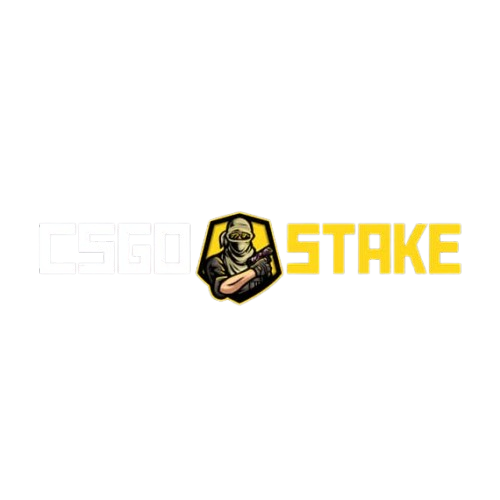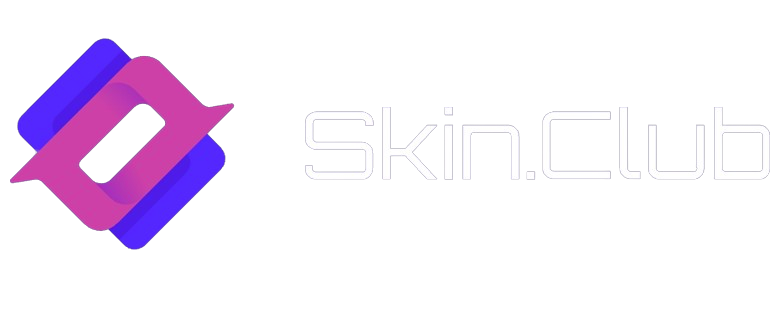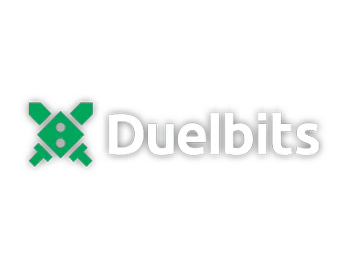If you’ve ever played Counter-Strike: Global Offensive (CSGO), you’ve probably noticed the massive hype surrounding its skin economy. But what if I told you that those flashy weapon skins aren’t just for show—they’re also fueling an entire online gambling industry? Welcome to the world of CSGO gambling sites, where players stake their digital goods for a shot at skins worth hundreds—or even thousands—of dollars.
These platforms have exploded in popularity, attracting a mix of casual gamers and serious bettors alike. They offer various games, such as roulette, jackpot, coinflip, crash, and case opening, all built around CSGO skins as currency. It’s like Vegas for gamers—but is it fun, or a risky rabbit hole?
Let’s break down the phenomenon of CSGO gambling: how it started, what types exist, which sites are legit, and whether or not you should take the plunge. Ready? Let’s dive in.
What is CSGO Gambling?
CSGO gambling refers to betting on games or chances using Counter-Strike: Global Offensive skins or currency. These skins are digital cosmetic items that players use to personalize their weapons. While they don’t offer any gameplay advantage, some skins are rare and can be worth hundreds or even thousands of dollars.
Instead of cash, CSGO gambling uses these skins as stakes. Players deposit their skins into a site, where their value is converted into credits. Then, they can play games like roulette, coinflip, crash, or jackpots. Depending on the outcome, they might win more valuable skins—or lose it all.
Some of the most popular gambling formats include:
-
Jackpot: Multiple users deposit skins. The higher the value of your deposit, the higher your chance of winning.
-
Roulette: Similar to casino-style roulette with red, black, and green color choices.
-
Crash: A real-time multiplier that increases, and users cash out before it crashes.
-
Coinflip: A 1v1 wager between two players betting on heads or tails.
So, CSGO gambling is a mix of gaming culture and the thrill of betting, all bundled into an online experience that has captivated millions.
History and Evolution of CSGO Gambling
Let’s rewind to 2013. Valve introduced CSGO weapon skins as cosmetic upgrades. They quickly became a hit due to their visual appeal and rarity. What Valve didn’t anticipate was the creation of a secondary market that would turn these skins into virtual currency.
By 2015, third-party sites started letting players bet their skins in mini-games. The most notorious game format at the time was the “jackpot.” Players would deposit skins, and one lucky participant would win the whole pot. These sites gained massive popularity through Twitch streamers showcasing big wins (and even bigger losses).
The community loved it—but regulators didn’t. In 2016, Valve began cracking down on third-party gambling sites, issuing cease-and-desist letters and threatening legal action. Despite this, the ecosystem didn’t disappear—it simply evolved. Today, more regulated and transparent platforms dominate the market, offering fairer games and better user experiences.
Here’s a quick timeline:
-
2013: CSGO skins introduced.
-
2014-2015: Skin gambling sites gain popularity.
-
2016: Valve takes legal action; many sites shut down.
-
2017-present: Rise of more legitimate and licensed platforms.
The evolution from a gray market to a more structured industry mirrors what’s happened in crypto and esports betting. It’s still not perfect—but it’s getting there.
The Role of CSGO Skins in Gambling
So, why skins? Why not just use cash?
That’s the magic (and mystery) of the CSGO economy. Skins have real-world value because players are willing to trade them for money or other digital items. This turns skins into a virtual currency. Their rarity and condition affect their price, and some rare skins like Dragon Lore or Karambit Fade can fetch thousands.
This perceived value fuels the entire gambling scene. Players use skins to:
-
Bet in games: Just like chips in a casino.
-
Trade up to better items: Using betting as a shortcut to premium gear.
-
Participate in giveaways or raffles.
Moreover, because they’re not technically cash, many sites operate in a legal gray area. Skins allow these platforms to skirt traditional gambling laws—though that’s changing as regulators catch on.
Key Points:
-
Liquidity: Skins can be sold on marketplaces like Steam or third-party sites.
-
Variety: Hundreds of different skins with varying prices.
-
Social currency: Flashy skins are a status symbol in the CSGO community.
In short, skins are the lifeblood of CSGO gambling. Without them, the entire ecosystem would collapse.
Types of CSGO Gambling

There’s more than one way to gamble your skins. CSGO gambling has evolved into a multi-faceted landscape with diverse game formats tailored to different risk appetites and player styles. Let’s break down the most popular types of CSGO gambling and how they work.
CSGO Skin Betting – How it works
Skin betting is the most straightforward form of gambling on CSGO sites. You deposit your skins, the site converts them into credits or tokens, and you use those credits to place bets.
Here’s how it works:
- Login through Steam.
- Deposit skins from your inventory.
- Get site credits equivalent to your skins’ value.
- Choose a game (e.g., roulette, crash, coinflip).
- Place your bets and hope for the best.
- Withdraw your winnings as skins or sometimes as cash.
This form of gambling is popular because it feels familiar and intuitive. You’re essentially using your in-game assets as chips in a digital casino.
Popular Skin Betting Games
Let’s look at the game modes that dominate the skin betting space:
- Roulette: The classic. You pick red, black, or green. Win and you multiply your credits.
- Crash: A real-time multiplier game where timing is everything. Cash out before the graph crashes.
- Coinflip: Bet 1v1 with another player. It’s a 50/50 shot—simple and fast-paced.
- Jackpot: A game of chance with pooled skins and percentage odds.
These games rely on random number generators (RNGs), and many reputable sites use Provably Fair systems to ensure transparency.
CSGO Jackpot Games
Jackpot games are one of the earliest and most exhilarating CSGO gambling formats. Here’s how it works: players deposit skins into a collective pot, and the site calculates each player’s odds of winning based on the total value of their contribution. The higher the value you deposit, the greater your chances of taking home the entire jackpot. While using the best CSGO Jackpot Sites.
Let’s break it down:
- Players join the game by depositing skins.
- Each player’s percentage chance is based on their deposit.
- Once a certain number of entries or total value is reached, the game begins.
- A random winner is selected using a random number generator.
Example:
- Player A deposits $10 in skins.
- Player B deposits $30 in skins.
- Total pot = $40
- Player A has a 25% chance, and Player B has a 75% chance of winning.
While luck is the dominant factor, many players employ strategies like “last-minute sniping,” where they enter just before the pot closes to avoid becoming an easy target.
Tips for CSGO Jackpot:
- Start small if you’re new. Big bets can lead to fast losses.
- Watch for bots—some shady sites manipulate outcomes.
- Stick to sites with Provably Fair tech to verify legitimacy.
CSGO jackpot games blend risk with thrill, and the unpredictability keeps users coming back. But remember, high risk equals high reward—and potential high loss.
CSGO Coinflip Games

CSGO coinflip is one of the simplest yet most addictive forms of skin gambling. The game mirrors a real-life coin toss: two players agree to wager skins of roughly equal value, and a virtual coin is flipped to decide who takes both while playing the best CSGO Coinflip Sites.
How it Works:
- You create or join a coinflip match.
- The site assigns sides—usually Terrorist (T) or Counter-Terrorist (CT).
- The flip happens instantly.
- Winner takes all the skins involved.
What makes coinflip so appealing?
- It’s quick. No waiting around—instant results.
- It’s head-to-head. There’s a sense of competitiveness.
- It’s binary. Either you win or you lose.
Coinflip matches can be between small bets or massive wagers involving rare skins like Dragon Lores or StatTrak knives. As with jackpot, some gamblers use psychological strategies—such as analyzing opponent patterns or choosing match times when traffic is low to increase odds.
Pro Tip: Avoid chasing losses. Coinflip might seem “winnable” because it’s 50/50, but variance can still crush your bankroll quickly. Keep emotion out of it.
CSGO Case Opening and Crash Games
Two other insanely popular game formats on CSGO gambling sites are case opening and crash.
CSGO Case Opening
This mimics the official Valve case opening system but with better odds—or so sites claim.
- You buy a virtual case (usually for credits).
- You click “open.”
- A roulette-like wheel spins and lands on a skin.
- The result ranges from junk skins to super rares.
Why is it popular? The visual experience mimics a real casino slot—lights, sounds, suspense. People get hooked, hoping to score big with a minimal bet.
Warning: The dopamine rush is real, and just like loot boxes, these can be dangerously addictive.
Crash Games

Crash is more interactive. A line graph representing a multiplier (e.g., 1.01x to 100x) rises steadily. Your job? Cash out before it “crashes.”
- Start with a bet.
- Watch the multiplier climb.
- Click “cash out” before the graph crashes to win.
It’s a nerve-wracking experience that feels like a mix of poker and chicken. Timing is everything.
Strategies:
- Auto cash-out at a safe multiplier (e.g., 1.5x or 2x).
- Low-stakes, high-frequency betting.
- Ride the pattern—many users believe in observing “hot” and “cold” streaks.
Crash and case opening cater to thrill-seekers. They’re flashy, quick, and potentially profitable—but carry the highest risk of all.
Our Top 5 Picks for CS2 Gambling in 2025
With hundreds of platforms to choose from, it’s crucial to know which sites are trustworthy and offer the best experience. Not all CSGO gambling sites are created equal—some are fair and transparent, while others are scams hiding behind flashy UIs.
Criteria for Ranking Gambling Sites
To identify the best sites, we use the following metrics:
-
Licensing & Regulation: Is the site legally operated under a gaming license?
-
Provably Fair System: Can the fairness of game results be verified?
-
Payment Methods: Skin deposits, crypto, fiat options?
-
Withdraw Speed: How fast can you get your skins back?
-
Game Variety: Does it offer roulette, crash, jackpot, etc.?
-
User Interface: Is it mobile-friendly, fast, and easy to use?
-
Customer Support: Responsive and helpful support is a must.
Avoid sites that:
-
Delay withdrawals
-
Have fake bots in lobbies
-
Lack transparency in game fairness
Top 5 Trusted CSGO Gambling Sites
Our experts found these below 5 sites to offer the best experience for Counter-Strike gambling and wagering.
1. CSGORoll
-
Games: Crash, Roulette, Dice, Case Opening.
-
Pros: Clean UI, Provably Fair, High-value giveaways.
-
Cons: Limited payment options.
-
Unique Feature: “Dice Duels” against other users.
2. Duelbits
-
Games: Casino games, Sportsbook, CSGO Skin Games.
-
Pros: Licensed, wide game variety.
-
Cons: Heavily crypto-focused.
-
Unique Feature: Loyalty rewards program.
3. Hellcase
-
Games: Case openings with a twist.
-
Pros: Massive skin collection, consistent drops.
-
Cons: Mostly luck-based.
-
Unique Feature: Upgrades system to improve skins.
4. Stake.com (CSGO Partnered)
-
Games: Crash, Dice, Plinko.
-
Pros: Global reputation, fast withdrawals.
-
Cons: Requires KYC.
-
Unique Feature: Crypto-only with CSGO tie-ins.
5. CSGOEmpire
-
Games: Roulette, Coinflip, Match betting.
-
Pros: Long-standing reputation, big player base.
-
Cons: Less variety in games.
-
Unique Feature: Empire Coins as internal currency.
Before playing, always double-check the URL, SSL certificate, and community reviews. Scammers often clone real sites to trick new users.
How to Start Gambling on CSGO Sites
Stepping into the world of CSGO gambling might sound complicated, but it’s actually quite straightforward. Whether you’re an experienced player or a newbie looking to test the waters, here’s a step-by-step guide to get started without any confusion.
Step-by-Step Registration Guide
1) Choose a Reputable Site
Don’t just go for the flashiest homepage. Pick a platform with positive reviews, licensing, and a Provably Fair system.
2) Log in via Steam
Most CSGO gambling sites use Steam’s API for login. You won’t have to create a new username or password—just log in through your Steam account.
- Tip: Always double-check the URL to avoid phishing attempts.
3) Set Your Trade URL
Once logged in, set your Steam Trade URL so the site can send or receive skins. This is crucial for deposits and withdrawals.
4) Deposit Skins or Currency
You can either:
- Deposit skins from your inventory.
- Buy site credits using cryptocurrency or gift cards (if supported).
5) Start Playing Games
Explore roulette, crash, coinflip, or case opening. Start with small bets to get a feel for the system.
6) Enable Two-Factor Authentication
For added security, always turn on 2FA through Steam Guard or Google Authenticator.
7) Set Betting Limits (Optional)
Some reputable sites offer responsible gambling tools like cooldowns or max-loss limits.
By following these steps, you’ll be ready to jump into the action. But remember, always gamble responsibly.
Depositing and Withdrawing Skins or Funds
Handling deposits and withdrawals is a major aspect of CSGO gambling. Each site has a different system, but the basics remain the same.
Deposits:
- Go to the “Deposit” or “Add Funds” section.
- Choose to deposit via skins, crypto, or sometimes PayPal/gift cards.
- For skins, a trade offer will be sent to your Steam account.
- After confirming, the site credits your balance.
Withdrawals:
- Navigate to “Withdraw” or “Shop” section.
- Choose your preferred item or equivalent credit value.
- Accept the trade offer sent by the site’s bot.
Warning: Some sites enforce a withdrawal cooldown or wager requirement before you can cash out.
Tips to Avoid Issues:
-
Make sure your inventory is public and trade-ready.
-
Don’t use skins that are on trade hold.
-
Watch out for fake bot accounts pretending to be the gambling site.
Smooth transactions are a hallmark of a legit site. If a platform delays or denies withdrawals without explanation, it’s a red flag—get out immediately.
Is CSGO Gambling Legal?
The legality of CSGO gambling isn’t black and white—it varies depending on your location and the type of gambling involved.
Legal Landscape Across Countries
- United States: Online gambling is restricted in many states. Skin betting exists in a gray zone, often unregulated.
- United Kingdom: Must be licensed under the UK Gambling Commission. Many sites block UK users due to strict regulations.
- Australia: Gambling on esports and skins is tightly regulated.
- Canada & Europe: Looser rules, but legitimate sites still need proper licensing.
If a site doesn’t mention its licensing authority, it’s likely operating in a legal gray area or flat-out illegally.
Valve’s Position on Gambling
In 2016, Valve—the developer of CSGO—took legal action to distance itself from third-party gambling sites using its API. It issued cease-and-desist letters, banned accounts, and temporarily shut down many popular platforms.
Despite this, many sites found workarounds:
- They operate as “skins marketplaces.”
- They avoid direct references to “gambling.”
- They comply with KYC and anti-money laundering laws.
Valve still discourages using skins for gambling, but they haven’t completely stopped the practice. The company’s ambiguous stance allows these sites to thrive—as long as they don’t attract too much heat.
Risks Involved in CSGO Gambling
Gambling always carries risk—but CSGO gambling comes with a few unique dangers:
- Underage Access: Many users are below the legal gambling age.
- Scams and Phishing: Fake trade bots, fraudulent sites, and impersonators are rampant.
- Lack of Regulation: No guarantees your deposits are safe.
- Addiction Potential: Fast-paced games like crash and roulette are built to be addictive.
While the community and thrill are part of the appeal, it’s essential to know the risks and set limits.
How to Identify Safe and Legit CSGO Gambling Sites
With the CSGO gambling landscape booming, it’s easy to get drawn into flashy sites that promise huge rewards—but not all of them are safe. The number of fake or shady platforms is growing too. So how can you spot a legit CSGO gambling site from a scam?
Key Signs of a Legit Site
1) Provably Fair System
Any reputable CSGO gambling site will use a “Provably Fair” algorithm. This ensures that each bet or game result is transparent and verifiable.
2) Active Community & Reviews
Real sites often have active Discord servers, community forums, or partnerships with well-known streamers. Always check Reddit or Trustpilot reviews for red flags.
3) Visible Licensing
Look for licensing from recognized gambling authorities like:
- Curacao eGaming
- Malta Gaming Authority (rare in skin sites)
- UK Gambling Commission (for full legal operation in the UK)
4) SSL Encryption
The site should have HTTPS encryption to protect your login details and payment info. No SSL? Close the tab immediately.
5) Responsive Support
Good sites offer live chat, ticket systems, and active email support. If you can’t get help when needed, it’s a risk.
Red Flags to Avoid
- Unrealistic Promotions: Promises of “guaranteed wins” or 100% deposit bonuses are a trap.
- No Social Presence: Scam sites often lack reviews, forums, or social media accounts.
- Cloned Designs: Fake sites often mimic popular gambling platforms but change a few letters in the URL.
Pro Tip: Always use two-factor authentication and avoid logging in from public Wi-Fi or shared devices.
Your skins are worth real money. Don’t put them at risk by choosing shady or unverified platforms.
Responsible Gambling: Setting Limits and Avoiding Addiction
Gambling should always be about entertainment, not making money. But when real value is involved—as it is with CSGO skins—it’s easy to fall into harmful patterns. Responsible gambling ensures that the fun doesn’t turn into a financial or emotional burden.
Recognizing the Signs of Problem Gambling
- Chasing losses by betting more after losing.
- Neglecting work or school due to gambling.
- Borrowing money or selling items to continue gambling.
- Feeling stressed, anxious, or guilty after gambling.
If any of these sound familiar, it’s time to pause.
Tips for Gambling Responsibly
- Set Time and Money Limits
Decide in advance how much time and money you’ll spend—and stick to it. - Use Site Tools
Many platforms offer cooldown periods, self-exclusion options, and deposit limits. - Never Gamble Under Stress
Emotional betting leads to poor decisions. Only gamble when you’re in the right mindset. - Track Your Spending
Keep a log of your deposits, losses, and wins. Being aware of the numbers helps control the behavior. - Take Breaks
Step away regularly. Don’t make gambling a daily habit.
If gambling ever stops being fun, it’s time to walk away. There are resources available, like BeGambleAware or Gamblers Anonymous, to support anyone struggling.
The Future of CSGO Gambling
As the CSGO community grows and evolves, so will the gambling scene. And with new tech like blockchain, NFTs, and Web3 integration entering the gaming world, the way we gamble on digital items is set for another revolution.
Emerging Trends to Watch
- Crypto and Blockchain Integration
Sites are shifting toward crypto payments for anonymity, speed, and global access. Many now accept Bitcoin, Ethereum, or even stablecoins like USDT. - NFT-Based Skin Markets
As skins become tokenized, we may see them used across games and platforms. - Mobile-First Gambling
Expect optimized apps and mobile-responsive sites for on-the-go gambling. - Regulatory Pressure
Governments are starting to catch up. More countries may enforce licensing, KYC verification, and age restrictions.
Impact on the Community
The future is a mix of innovation and regulation. For the ecosystem to survive, gambling platforms must become more transparent, responsible, and fair. Players, too, must be cautious, educated, and aware.
CSGO gambling isn’t going away—it’s evolving.
Conclusion
CSGO gambling sites are a fascinating crossroad of gaming, economics, and entertainment. What started as a niche way to risk a few skins has grown into a full-blown industry with millions of users worldwide. Whether you’re looking to bet a few skins for fun or aiming for the jackpot, it’s crucial to understand the landscape before diving in.
From roulette and crash games to skin betting and jackpots, the opportunities—and risks—are endless. But success in CSGO gambling isn’t just about luck. It’s about choosing the right site, using smart strategies, and knowing when to walk away.
Most importantly, always prioritize safety and responsible gambling. Your skins—and your mental health—are worth protecting.
Frequently Asked Questions
It depends. Some countries allow online gambling with proper licensing, while others ban it altogether. Always check your local laws before participating.
Indirectly, yes. You win skins, which can be sold or traded for real money on third-party marketplaces.
Most legit sites require users to be at least 18 years old. However, enforcement can vary, and underage gambling remains an issue in the industry.
It’s a cryptographic system that ensures each game’s outcome is fair and not manipulated. Players can verify the results after each round.
Roulette or coinflip are generally easier for beginners. Always start small and never bet more than you can afford to lose.































